Opinion & Analysis
Wishon: What lofts should your clubs be?
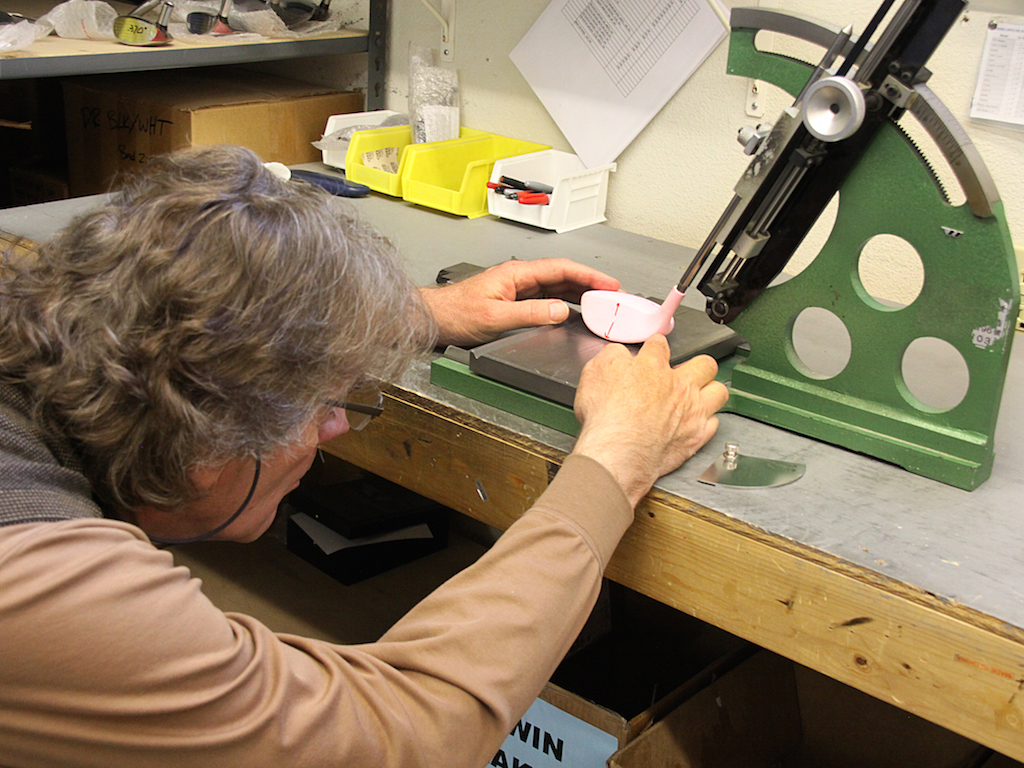
Proper loft fitting involves more than just the loft of the driver. Since loft is the main factor of shot distance, trajectory and backspin for each club in the bag, the clubfitter has to consider several factors for each golfer when making the recommendation for the best lofts for each club.
Factors for determining loft
Key to this is the right set makeup for each golfer. As such the most important golfer inputs that are used to help determine the best initial lofts prior to hit testing are shown above.
The following is an overview of the key points in loft determination for the driver, woods, hybrids and irons.
[quote_box_center]The higher the clubhead speed and the more upward the angle of attack, the lower the driver loft should be for optimal tee shot performance.
The lower the clubhead speed and the more downward the angle of attack, the higher the driver loft should be for optimal tee shot performance.[/quote_box_center]
Launch angle is the No. 1 most important launch monitor parameter to observe and react to in determining the golfer’s best driver loft. Spin outputs come a distant second behind visual observation of the ball flight and the golfer’s clubhead speed. The higher the clubhead speed, the more possibility there may be for a spin issue to be considered in the fitting of the loft. But never should the spin output of the launch monitor trump the importance of the observation of the ball flight shape.
Too many golfers focus too much on the backspin measurement for the driver on a launch monitor – ball flight shape tells you more about driver backspin fitting than a launch monitor.
Learn what a driver shot hit with too much backspin looks like. Achieving the best launch angle and ball flight shape is more important than achieving the best backspin measurement.
Loft is the No. 1 way to change backspin and launch angle. The shaft will change spin and launch angle for golfers with later-to-releases, but only SLIGHTLY. The only way the shaft can reduce backspin for a golfer with an actual high spin problem is if the new shaft is stiffer overall and or stiffer in the tip section than the golfer’s current shaft. It is NEVER wise to increase stiffness in a shaft beyond what is the golfer’s proper flex and bend profile as the way to try to reduce the spin.
When the golfer does actually have a problem of too much backspin with the driver — one that is verified with a visual analysis of the ball flight shape — 98 percent of the time it is a problem that has to be resolved by a swing change and not from an equipment change.
Knowing the lowest fairway wood loft and lowest iron loft that the golfer can hit consistently well up in the air to achieve proper carry distance is the key for choosing:
- The golfer’s first fairway wood after the driver.
- The number of hybrids or high-lofted fairway woods a golfer needs.
- The first iron in a golfer’s set.
This is why proper loft fitting also involves deciding what the golfer’s best set makeup will be at the same time.
If you doubt the golfer’s own evaluation of the lowest loft wood and iron they hit consistently well, always recommend more loft for the first fairway wood after the driver and one more hybrid or high-lofted fairway wood before starting the iron set makeup.
The current lofts of the golfer’s irons play a role in iron loft fitting because no golfer wants a new set of irons that he hits shorter in distance per each number. There is nothing wrong with very low lofts in an iron set as long as the correct judgment is made for the golfer’s set makeup recommendation. For example, the stronger the lofts in the irons, the more hybrids or high-lofted woods there would be and the higher the number of the first iron.
Much lower-lofted iron sets may require a change in the set makeup such that the golfer’s first iron may need to be a 6 iron or even a 7 iron. Never fit a golfer with a loft that he/she cannot hit well up in the air to fly with reasonable consistency.
Loft gaps between clubs should be greater as the golfer’s clubhead speed is slower
- 4-degree gaps: 5 iron swing speed of 80 mph or more
- 5-degree gaps: 5 iron swing speed of 65-to-75 mph
- 6-degree gaps: 5 iron swing speed under 65 mph
Nine times out of 10, when a golfer hits the ball VERY high the reason is a swing error in which the golfer is releasing the club in a way that allows the clubhead to pass the hands before impact and thus adds dynamic loft to the clubhead to result in the very high flight. In such cases, lower loft(s) will only help a little. The remedy to bring the ball down to a reasonable height will almost always be lessons to correct the impact position error.
Clubhead center of gravity (CG) can help more with loft fitting to achieve a little bit better trajectory for proper carry distance in the fairway woods first, hybrids second and irons last. But the effect of CG on shot height is ALWAYS proportional to the golfer’s club head speed and angle of attack.
[quote_box_center]The higher the clubhead speed, the more the CG can visibly affect the trajectory of a given loft angle and vice versa.
The more downward the angle of attack, the less the CG can visibly assist the trajectory from a given loft angle.[/quote_box_center]
In other words, the slower the clubhead speed and more downward the angle of attack, the less the CG has any effect on shot height and the more that loft becomes the only factor to improve shot height and with it, proper carry distance for optimizing distance.
Related
- What length should your clubs be?
- What lofts should your clubs be?
- Face angle is crucial for a proper fitting
- The best way to fit lie angle
- How to choose the right club head design
- Tom Wishon’s keys to set makeup
- Getting the right size grip, time after time
- What shaft weight should you play?
- What swing weight should your clubs be?
- What shaft flex should I use?
This story is part of a 10-part series from Tom Wishon on professional club fitting.
- LIKE64
- LEGIT273
- WOW77
- LOL11
- IDHT11
- FLOP23
- OB8
- SHANK16
19th Hole
Vincenzi’s 2024 RBC Heritage betting preview: Patrick Cantlay ready to get back inside winner’s circle

Just a two-hour drive from Augusta National, the PGA TOUR heads to Harbour Town Golf Links in Hilton Head Island, S.C. Hilton Head Island is a golfer’s paradise and Harbour Town is one of the most beautiful and scenic courses on the PGA TOUR.
Harbour Town Golf Links is a par-71 that measures 7,121 yards and features Bermuda grass greens. A Pete Dye design, the course is heavily tree lined and features small greens and many dog legs, protecting it from “bomb-and-gauge” type golfers.
The field is loaded this week with 69 golfers with no cut. Last year was quite possibly the best field in RBC Heritage history and the event this week is yet another designated event, meaning there is a $20 million prize pool.
Most of the big names on the PGA Tour will be in attendance this week with the exceptions of Hideki Matsuyama and Viktor Hovland. Additionally, Webb Simpson, Shane Lowry, Gary Woodland and Kevin Kisner have been granted sponsors exemptions.
Past Winners at Harbour Town
- 2023: Matt Fitzpatrick (-17)
- 2022: Jordan Spieth (-13)
- 2021: Stewart Cink (-19)
- 2020: Webb Simpson (-22)
- 2019: CT Pan (-12)
- 2018: Sotoshi Kodaira (-12)
- 2017: Wesley Bryan (-13)
- 2016: Branden Grace (-9)
- 2015: Jim Furyk (-18)
In this article and going forward, I’ll be using the Rabbit Hole by Betsperts Golf data engine to develop my custom model. If you want to build your own model or check out all of the detailed stats, you can sign up using promo code: MATTVIN for 25% off any subscription package (yearly is best value).
Key Stats For Harbour Town
Let’s take a look at key metrics for Harbour Town Golf Links to determine which golfers boast top marks in each category over their past 24 rounds.
Strokes Gained: Approach
Strokes Gained: Approach is exceedingly important this week. The greens at Harbour Town are about half the size of PGA TOUR average and feature the second-smallest greens on the tour. Typical of a Pete Dye design, golfers will pay the price for missed greens.
Total SG: Approach Over Past 24 Rounds
- Scottie Scheffler (+1.27)
- Tom Hoge (+1.27)
- Corey Conners (+1.16)
- Austin Eckroat (+0.95)
- Cameron Young (+0.93)
Good Drive %
The fairways at Harbour Town are tree lined and feature many dog legs. Bombers tend to struggle at the course because it forces layups and doesn’t allow long drivers to overpower it. Accuracy is far more important than power.
Good Drive % Over Past 24 Rounds
- Brice Garnett (88.8%)
- Shane Lowry (+87.2%)
- Akshay Bhatia (+86.0%)
- Si Woo Kim (+85.8%)
- Sepp Straka (+85.1%)
Strokes Gained: Total at Pete Dye Designs
Pete Dye specialists tend to play very well at Harbour Town. Si Woo Kim, Matt Kuchar, Jim Furyk and Webb Simpson are all Pete Dye specialists who have had great success here. It is likely we see some more specialists near the top of the leaderboard this week.
SG: TOT Pete Dye per round over past 36 rounds:
- Xander Schauffele (+2.27)
- Scottie Scheffler (+2.24)
- Ludvig Aberg (+2.11)
- Brian Harman (+1.89)
- Sungjae Im (+1.58)
4. Strokes Gained: Short Game (Bermuda)
Strokes Gained: Short Game factors in both around the green and putting. With many green-side bunkers and tricky green complexes, both statistics will be important. Past winners — such as Jim Furyk, Wes Bryan and Webb Simpson — highlight how crucial the short game skill set is around Harbour Town.
SG: SG Over Past 24 Rounds
- Jordan Spieth (+1.11)
- Taylor Moore (+1.02)
- Wyndham Clark (+0.98)
- Mackenzie Hughes (+0.86)
- Andrew Putnam (+0.83)
5. Greens in Regulation %
The recipe for success at Harbour Town Golf Links is hitting fairways and greens. Missing either will prove to be consequential — golfers must be in total control of the ball to win.
Greens in Regulation % over past 24 rounds:
- Brice Garnett (+75.0%)
- Scottie Scheffler (+69.9%)
- Corey Conners (+69.0%)
- Shane Lowry (+68.3%)
- Patrick Rodgers (+67.6%)
6. Course History
Harbour Town is a course where players who have strong past results at the course always tend to pop up.
Course History over past 24 rounds:
- Patrick Cantlay (+2.34)
- Cam Davis (+2.05)
- J.T. Poston (+1.69)
- Justin Rose (+1.68)
- Tommy Fleetwood (+1.59)
The RBC Heritage Model Rankings
Below, I’ve compiled overall model rankings using a combination of the five key statistical categories previously discussed — SG: Approach (24%), Good Drives (20%), SG: SG (14%), SG: Pete Dye (14%), GIR (14%), and Course History (14%)
- Shane Lowry
- Russell Henley
- Scottie Scheffler
- Xander Schauffele
- Corey Conners
- Wyndham Clark
- Christiaan Bezuidenhout
- Matt Fitzpatrick
- Cameron Young
- Ludvig Aberg
2024 RBC Heritage Picks
Patrick Cantlay +2000 (FanDuel)
With the exception of Scottie Scheffler, the PGA Tour has yet to have any of their star players show peak form during the 2024 season. Last week, Patrick Cantlay, who I believe is a top-5 players on the PGA Tour, took one step closer to regaining the form that’s helped him win eight events on Tour since 2017.
Cantlay limped into the Masters in poor form, but figured it out at Augusta National, finishing in a tie for 20th and ranking 17th for the week in Strokes Gained: Ball Striking. The former FedEx Cup champion will now head to one of his favorite golf courses in Harbour Town, where he’s had immaculate results over the years. In his six trips to the course, he’s only finished worse than 7th one time. The other finishes include three third places (2017, 2019, 2023) and one runner-up finish (2022). In his past 36 rounds at Harbour Town, Cantlay ranks 1st in Strokes Gained: Total per round at the course by a wide margin (+2.36).
Cantlay is winless since the 2022 BMW Championship, which is far too long for a player of his caliber. With signs pointing to the 32-year-old returning to form, a “signature event” at Harbour Town is just what he needs to get back on the winning track.
Tommy Fleetwood +3000 (FanDuel)
I truly believe Tommy Fleetwood will figure out a way to win on American soil in 2024. It’s certainly been a bugaboo for him throughout his career, but he is simply too talented to go another season without winning a PGA Tour event.
At last week’s Masters Tournament, Fleetwood made a Sunday charge and ended up finishing T3 in the event, which was his best ever finish at The Masters. For the week, the Englishman ranked 8th in the field in Strokes Gained: Approach, 10th in Strokes Gained: Ball Striking and 16th in Strokes Gained: Putting.
Harbour Town is a perfect layout for Fleetwood, and he’s had relative success at this Pete Dye design in the past. In his four trips to the course, he’s finished inside of the top 25 three times, with his best finish, T10, coming in 2022. The course is pretty short and can’t be overpowered, which gives an advantage to more accurate players such as Fleetwood. Tommy ranks 8th in the field in Good Drive % and should be able to plot his way along this golf course.
The win is coming for Tommy lad. I believe there’s a chance this treasure of a golf course may be the perfect one for him to finally break through on Tour.
Cameron Young +3300 (FanDuel)
Cameron Young had a solid Masters Tournament last week, which is exactly what I’m looking for in players who I anticipate playing well this week at the RBC Heritage. He finished in a tie for 9th, but never felt the pressure of contending in the event. For the week, Young ranked 6th in Strokes Gained: Off the Tee and 6th in Strokes Gained: Ball Striking.
Despite being one of the longest players off the tee on the PGA Tour, Young has actually played some really good golf on shorter tracks. He finished T3 at Harbour Town in 2023 and ranks 20th in the field in Good Drive% and 16th in Greens in Regulation in his past 24 rounds. He also has strong finishes at other shorter courses that can take driver out of a players hand such as Copperhead and PGA National.
Young is simply one of the best players on the PGA Tour in 2024, and I strongly believe has what it takes to win a PGA Tour event in the very near future.
Corey Conners +5500 (FanDuel)
Corey Conners has had a disappointing year thus far on the PGA Tour, but absolutely loves Harbour Town.
At last week’s Masters Tournament, the Canadian finished T30 but ranked 20th in the field in Strokes Gained: Approach. In his past 24 rounds, Conners ranks 3rd in the field in Strokes Gained: Approach, 3rd in Greens in Regulation % and 24th in Good Drive %.
In Conners’ last four trips to Harbour Town, his worst finish was T31, last season. He finished T4 in 2021, T12 in 2022 and ranks 8th in Strokes Gained: Total at the course over his past 36 rounds.
Conners hasn’t been contending, but his recent finishes have been encouraging as he has finished in the top-25 in each of his past three starts prior to The Masters, including an impressive T13 at The PLAYERS. His recent improvement in ball striking as well as his suitability for Harbour Town makes Conners a high upside bet this week.
Shane Lowry (+7500) (FanDuel)
When these odds were posted after Lowry was announced in the field, I have to admit I was pretty stunned. Despite not offering much win equity on the PGA Tour over the last handful of years, Shane Lowry is still a top caliber player who has the ability to rise to the top of a signature event.
Lowry struggled to score at The Masters last week, but he actually hit the ball really well. The Irishman ranked 1st for Strokes Gained: Approach on the week and 7th in Strokes Gained: Ball Striking. As usual, it was the putter that let him down, as he ranked 60th in the field in Strokes Gained: Putting.
Harbour Town is most definitely one of Lowry’s favorite courses on the PGA Tour. In his six starts there, he’s finished in the top 10 three times, including third twice. Lowry is sensational at Pete Dye designs and ranks 7th in Strokes Gained: Total in his past 36 rounds on Dye tracks.
Lowry is perfect for Harbour Town. In his past 24 rounds, he ranks 5th in Strokes Gained: Approach, 2nd in Good Drive% and 5th in Green in Regulation %. If he figures it out on the greens, Shane could have his first win in America since 2015.
Lucas Glover +12000 (FanDuel)
This is one of my weekly “bet the number” plays as I strongly believe the odds are just too long for a player of Glover’s caliber. The odds have been too long on Glover for a few weeks now, but this is the first event that I can get behind the veteran being able to actually contend at.
Glover is quietly playing good golf and returning to the form he had after the understandable regression after his two massive victories at the end of 2023. He finished T20 at The Masters, which was his best ever finish at Augusta National. For the week, Lucas ranked 18th for Strokes Gained: Approach and 20th in Strokes Gained: Ball Striking.
Over his past 24 rounds, Glover ranks 9th in Strokes Gained: Approach and 13th in Good Drive %. Harbour Town is a short course that the 44-year-old will be able to keep up with the top players on Tour off the tee. He’s played the course more than 20 times, with mixed results. His best finishes at Harbour Town include a T7 in 2008, but recently has a finish of T21 in 2020.
Glover has proven he can contend with the stars of the Tour on any given week, and this number is flat out disrespectful.
- LIKE29
- LEGIT5
- WOW1
- LOL1
- IDHT1
- FLOP2
- OB0
- SHANK2
19th Hole
Vincenzi: The 6 biggest takeaways from the 2024 Masters
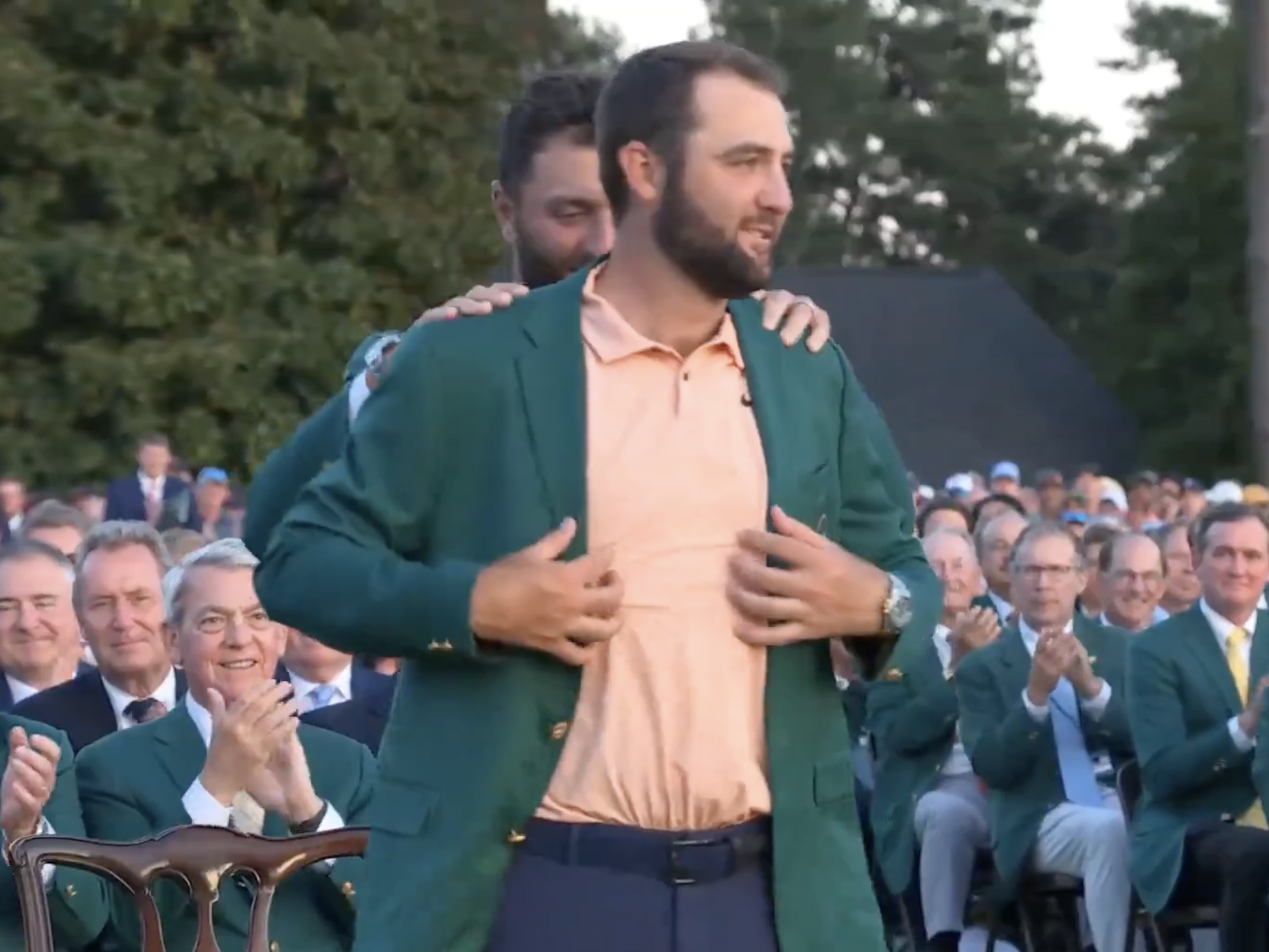
The 2024 Masters offered up plenty of excitement throughout the week with Scottie Scheffler delivering when it mattered to live up to his pre-tournament favorite tag. With the year’s opening major now in the books, here are my six biggest takeaways from the 2024 Masters.
Scheffler In a League of His Own
In the most impressive way possible, Scottie Scheffler won the Masters without having his absolute best stuff. For the week, Scottie ranked 19th in Strokes Gained: Approach, which is a category the number player in the world typically dusts the rest of the field in. After a strong approach day on Thursday, the 27-year-old lost strokes to the field on approach on Friday and Saturday, before gaining on Sunday. The iron performance was more than solid, but it was an all-around game that helped Scheffler get it done around Augusta National.
For a year or more, the narrative around Scheffler has been, “With his ball striking, if he can just putt to field average, he’ll be unbeatable.” At Augusta, his ball striking came back down to earth, but his touch around the greens and ability to manage the golf course demonstrated why he is the best player on the planet right now. For the week, Scheffler ranked 1st in the field in Strokes Gained: Around the Green and 24th in Strokes Gained: Putting.
For the time being, there is a major gap between Scottie Scheffler and the second-best player in the world, whoever that may be.
The Future is Now
Ludvig Aberg went into his first back-nine at the Masters with a legitimate shot to win the tournament. When he teed it up on the treacherous 11th hole, he was one behind Scottie Scheffler, who had just stuck one to a few feet on the 9th. By the time he approached his tee shot, which was perfectly striped down the left side of the fairway, he was two behind. Unfortunately, the 24-year-old got too aggressive with his approach at the 11th and found the water, making double bogey. Ludvig rebounded nicely and finished the event in solo second place.
With the Masters now in the rearview, it’s never been more evident that Ludvig Aberg is no longer an “up-and-comer” — he has arrived. The Swede has been an integral part of a winning European Ryder Cup team and has now contended at Augusta National. With a calm demeanor, a picture-perfect swing, and a build and stature that appears as if it was built in a lab, Ludvig Aberg is already amongst the world’s best. I’d be extremely surprised if he wasn’t in the mix at next month’s PGA Championship at Valhalla.
Nostalgia Wins
I try to avoid as many cliches as possible, but there’s something about the Masters that brings out the sentimentality in me. Tiger Woods strategically making his way around Augusta National without all of the physical tools that made him arguably the most dominant athlete in the history of sports will always be riveting, regardless of what score he shoots. Woods made it interesting until a tough stretch of holes on Saturday, but he ultimately wore down, shooting 16 over for the week in difficult conditions. It’s remarkable that the 15-time major champion was able to put together a few solid rounds of golf despite barely playing any competitive golf in 2024. As long as Woods tees it up at Augusta, we will all continue to be mesmerized by it.
Verne Lundquist’s 40th and final Masters Tournament was also a must-watch aspect of the event. The iconic voice of Lundquist and his calls throughout the years still give me chills each time I hear them. Verne is an icon of the game and will be missed in future renditions of the Masters.
The Masters also brings another element that is unique to the tournament. Former champions turn back the clock to battle with the golf course again which creates some amazing stories. There are a few that stick out this year and were an absolute pleasure to witness. 61-year-old Vijay Singh made the cut for the first time since 2018 and shot a pretty incredible even-par, 72 on Sunday. 58-year-old José María Olazábal made the cut as well, reminding us why fellow Spaniard Jon Rahm sought his valuable advice prior to his Masters victory in 2022.
Regardless of who wins, the Masters always delivers.
Bryson Moves the Needle
Plenty will disagree with me on this point, but outside of Tiger Woods, and potentially Rory McIlroy and Jordan Spieth, no one moves the needle in golf as much as Bryson DeChambeau. The uniqueness in which Bryson approaches the game has always been fascinating, and if he gets near the top of the leaderboard at any major championship, whether it’s to root for him or against him, people are interested.
It began on Monday with a pretty bizarre story of DeChambeau using 3D-printed irons that got just got cleared for use by the USGA when the week began. It once again felt like a storyline that would only be possible with a character as eccentric as Bryson. He then raced off to a first-round lead in tough conditions, reminding the world of what made him such a great golfer to begin with. He made some mistakes on the weekend, but still finished a career best T6 at The Masters.
Bryson is more than just quirky; he is a former U.S. Amateur Champion and U.S. Open who I believe will contend for more majors in the future. I will continue to root for DeChambeau, but I’m perfectly content with the fact that plenty will root against him, and I encourage those people to do so. That’s what makes it fun.
LIV Walks Away Empty-Handed
Last year, there were a multitude of questions about LIV players coming into the year’s first major. They had played very limited tournament golf, and critics of LIV questioned whether the 54-hole events were enough to sharpen the players enough to compete against the best in the world on the biggest stage.
The results were fascinating, with LIV players all over the leaderboard. Brooks Koepka held the 36- and 54-hole lead, with Phil Mickelson and Patrick Reed finishing T2 and T4, giving LIV three golfers in the top-4 of the leaderboard.
This season, with even more time removed and with some more massive additions to the roster, the intrigue surrounding LIV players at Augusta was once again palpable. While some players, including Bryson DeChambeau, exceeded expectations, I can’t help but walk away from the Masters feeling underwhelmed by the performance of the LIV players.
Brooks Koepka finished runner-up last season and is a certified major championship killer. The 5-time major champ was never involved and simply didn’t have it at Augusta. Dustin Johnson put together a putrid performance, shooting 13 over for his two rounds, making it fair to wonder if his days of contending at major championships are over as he rapidly approaches his 40th birthday.
Jon Rahm and Joaquin Niemann were both players who were amongst the favorites this week, but Rahm was faced with the daunting duties of defending champion and Niemann proved he was still not quite ready to master the quirks of Augusta National, bleeding strokes both around and on the greens.
To be fair, when all was said and done, LIV had four players in the top twelve at The Masters. Tyrrell Hatton stormed the leaderboard early on Sunday, finishing T9 and earning himself an invite back to Augusta next season. Cam Smith and Patrick Reed put together gritty performances, which isn’t too surprising considering the fact that they both absolutely love Augusta National, but neither ever felt a real threat to win. There’s no doubt the players on LIV are good, and that’s why some encouraging leaderboard positions aren’t enough. They needed to contend.
With no players part of the storyline on Sunday, I view the first major of the year as a disappointment for LIV. The players will head into next month’s PGA Championship at Valhalla with a lot to prove.
Rory’s Struggles Continues
Rory struggling at Augusta National is no surprise at this point. The four-time major champion has now had 10 attempts to complete the career grand slam and has never had a chance to win. His T2 in 2022 was deceiving, the Northern Irishman stormed the leaderboard on Sunday, but was never in contention, and never got within three shots of the winner, Scottie Scheffler.
I didn’t expect Rory to win, but I have to admit that this year felt a bit different. McIlroy played the week prior to the Masters, which he typically doesn’t do, and finished third at the Valero Texas Open. He gained 7.56 strokes on approach and 2.0 strokes off the tee, which told me that his visit with world-renowned swing coach, Butch Harmon, after the Players Championship paid dividends.
McIlroy also approached the media quite differently. He cut his pre-tournament press conference short after only 10 minutes and seemed to be laser-focused on just playing golf.
Despite the different approach to the Masters, the results were the same. McIlroy struggled over the course of the week, finishing T22 (+4) and never sniffed a decent weekend position on the leaderboard. It’s back to the drawing board for McIlroy, and I have doubts that he will ever figure it out at Augusta.
- LIKE51
- LEGIT9
- WOW4
- LOL1
- IDHT2
- FLOP2
- OB2
- SHANK7
19th Hole
Vincenzi: The 8 best prop bets for the 2024 Masters
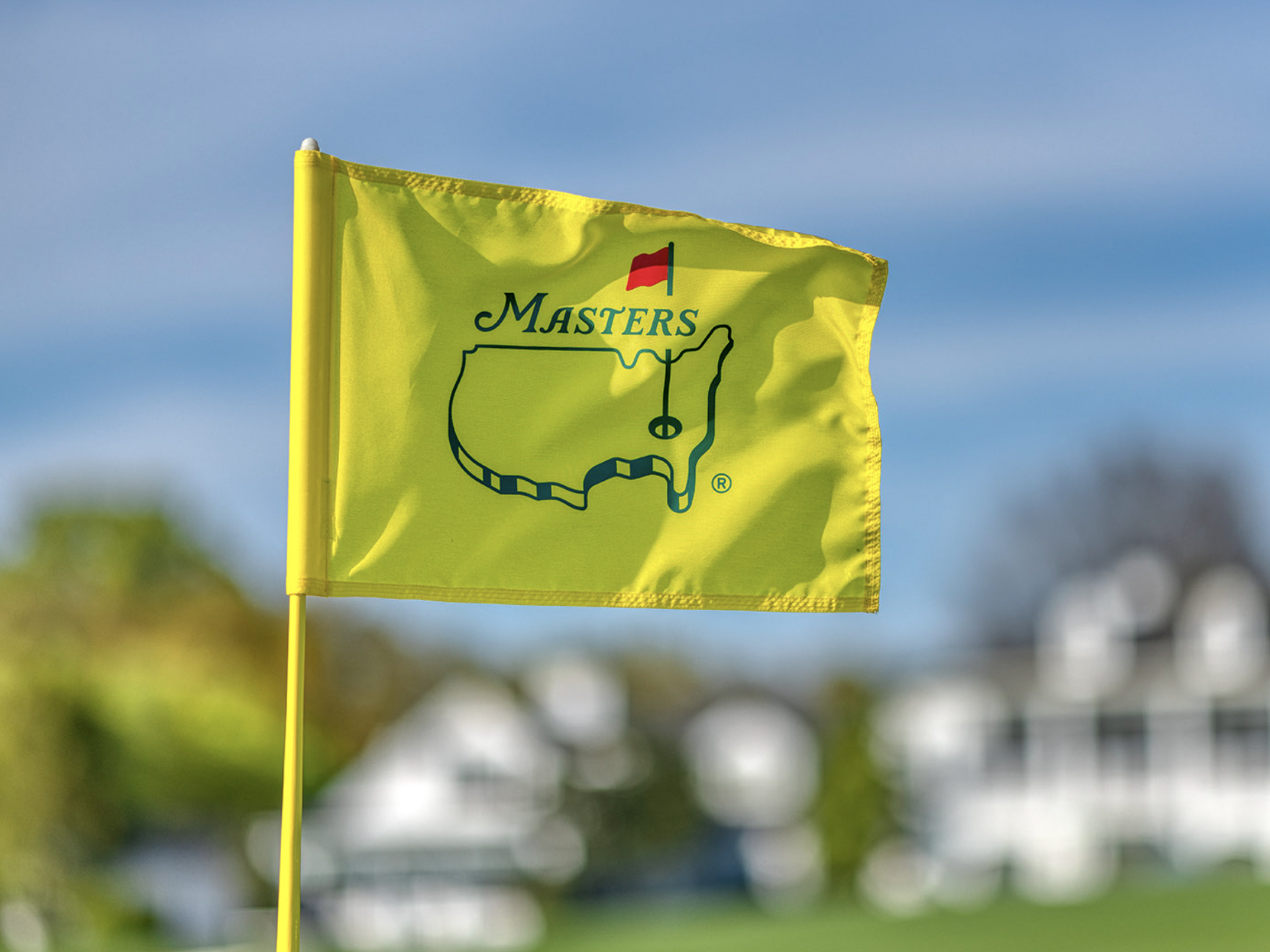
We’ve finally reached The Masters and excitement is at an all-time high. The world of golf has been fractured for the better part of two years, but for a week at Augusta National, all of the outside noise will disappear. All of the best players in the world will be together seeking to make history.
In addition to betting on The Masters champion. This is one of the few weeks of the year where there are so many more markets to explore, with value to be had in plenty of different categories.
Throughout this article, I’ll discuss all of my favorite props and players for the 2024 Masters.
Placement Bets:
Tony Finau Top 5 +750 (DraftKings):
I badly wanted to include Tony Finau in my outright betting selections, but I simply ran out of room on my card. Additionally, it’s slightly difficult to see him hitting the putts necessary to win the Masters on back nine on Sunday. However, I do strongly believe he will play great golf this week at Augusta National.
In his past 24 rounds, Finau ranks 4th in Strokes Gained: Approach is always amongst the best drivers of the golf ball in the game. Back in 2019, Finau had a great chance to win The Masters. I expect him to be hanging around over the weekend once again in 2024.
Gary Woodland Top 20 +550 (DraftKings), Gary Woodland to make the cut -110 (DraftKings):
Last season, Gary Woodland had his best ever finish at The Masters in his eleven tries. The 39-year-old finished T14 and played incredibly steady across all four rounds.
In Woodland’s most recent start at the Texas Children’s Houston Open, he struck the ball incredibly well. He led the field in Strokes Gained: Approach (+8.8) and Strokes Gained: Ball Striking (+10.0).
Gary has been working with Butch Harmon and absolutely flushing the ball both in tournaments and during practice.
Woodland appears to be healthy once again and in a great place physically and mentally. If he can build off his impressive performance at Augusta last year, he can place inside the top ten in 2024.
Additionally, the make the cut number on Woodland seems generous considering the number of players who miss the cut will be relatively small this week. Woodland is striking it well enough to make the cut even if he’s hindered by a balky putter once again.
Thorbjorn Olesen Top 20 +400 (FanDuel):
The Thunder Bear, Thorbjorn Olesen, made his Masters debut in 2013 and finished an incredibly impressive T6 for the week. In the two additional starts he’s made at Augusta National since then, the Dane has continued to be incredibly solid, finishing T44 and T21.
This week, Olesen heads into the week playing some good golf. He gained 3.8 strokes on approach and 5.52 strokes around the green at last week’s Valero Texas Open on his way to a strong T14 finish. Back in January, he won the Ras Al Khaimah Championship on the DP World Tour.
Olesen has the skill set to be successful at Augusta and seems primed for a good performance this week.
Top Nationalities:
Sergio Garcia Top Spanish Player +280 (DraftKings):
I believe Sergio Garcia can get into contention this week with the way he’s striking the ball in addition to his good vibes with a refurbished version of the Scotty Cameron that he used at the 1999 PGA Championship at Medinah.
I am slightly concerned about the emotional letdown he may face after losing in a playoff at LIV Miami, but I believe a veteran and former Masters champion should be able to regroup and focus on an event far more meaningful.
This is essentially a tournament head-to-head with Jon Rahm at +280. While Rahm deserves to be respected this week, the history of the lack of success of defending champions at The Masters is difficult to ignore.
Joaquin Niemann Top South American Player -230 (FanDuel):
While I hate paying this much juice, I don’t see a world in which Joaquin Niemann isn’t the top South American this week at The Masters. Joaco comes in playing better golf than anyone in the world not named Scottie Scheffler and has a serious chance to win the green jacket.
He only needs to beat two players: Emiliano Grillo and Camilo Villegas.
Tournament Head-to-Heads:
Justin Thomas -110 over Collin Morikawa
JT isn’t having his best season but is playing a lot better than he is getting credit for at the moment. In the past three months, there are only six players on the PGA Tour who have averaged 1.7 Strokes Gained: Tee to Green or better. Justin Thomas (+1.7) is one of the six and is currently tied with Rory McIlroy (+1.7).
Morikawa, on the other hand, has been extremely poor with his irons, which is incredibly uncharacteristic for him. I can’t help but feel like something is completely off with the two-time major champion.
Tony Finau -110 over Wyndham Clark
I explained in the placement section why I’m so high on Tony Finau this week. With how well he’s striking the ball, it seems as if his floor is extremely high. I’m not sure if he can make the putts to win a green jacket but I believe he will be in the mix similarly to 2019 when Tiger Woods emerged from a crowded pack of contenders.
Clark is a debutant, and while some debutants have had success at The Masters, it certainly poses a challenge. I also don’t believe Augusta National suits Clark as well as some of the other major championship venues.
- LIKE9
- LEGIT5
- WOW3
- LOL0
- IDHT0
- FLOP0
- OB0
- SHANK3
-

 19th Hole1 week ago
19th Hole1 week agoDave Portnoy places monstrous outright bet for the 2024 Masters
-

 19th Hole2 weeks ago
19th Hole2 weeks agoThings got heated at the Houston Open between Tony Finau and Alejandro Tosti. Here’s why
-

 19th Hole1 week ago
19th Hole1 week agoTiger Woods arrives at 2024 Masters equipped with a putter that may surprise you
-

 19th Hole2 weeks ago
19th Hole2 weeks agoReport: Tiger Woods has ‘eliminated sex’ in preparation for the 2024 Masters
-

 19th Hole4 days ago
19th Hole4 days agoTwo star names reportedly blanked Jon Rahm all week at the Masters
-

 19th Hole3 days ago
19th Hole3 days agoNeal Shipley presser ends in awkward fashion after reporter claims Tiger handed him note on 8th fairway
-

 19th Hole2 days ago
19th Hole2 days agoReport: LIV Golf identifies latest star name they hope to sign to breakaway tour
-

 19th Hole2 weeks ago
19th Hole2 weeks agoAddiction, spinal fusion, and scam artists – Everything Anthony Kim revealed in candid interview with David Feherty

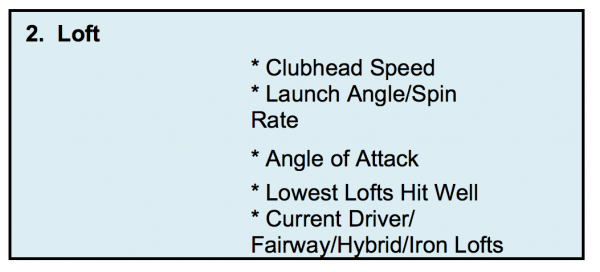
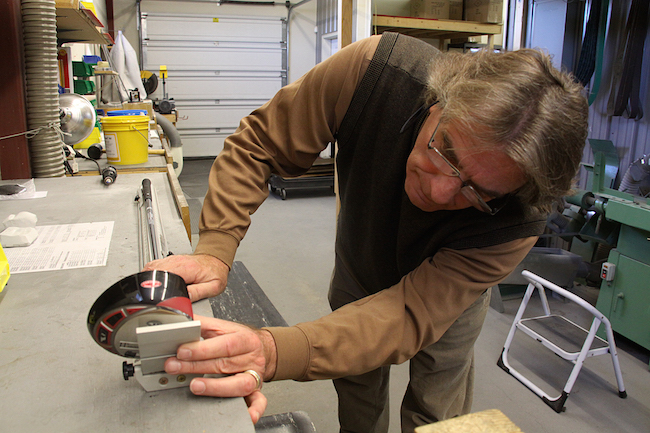


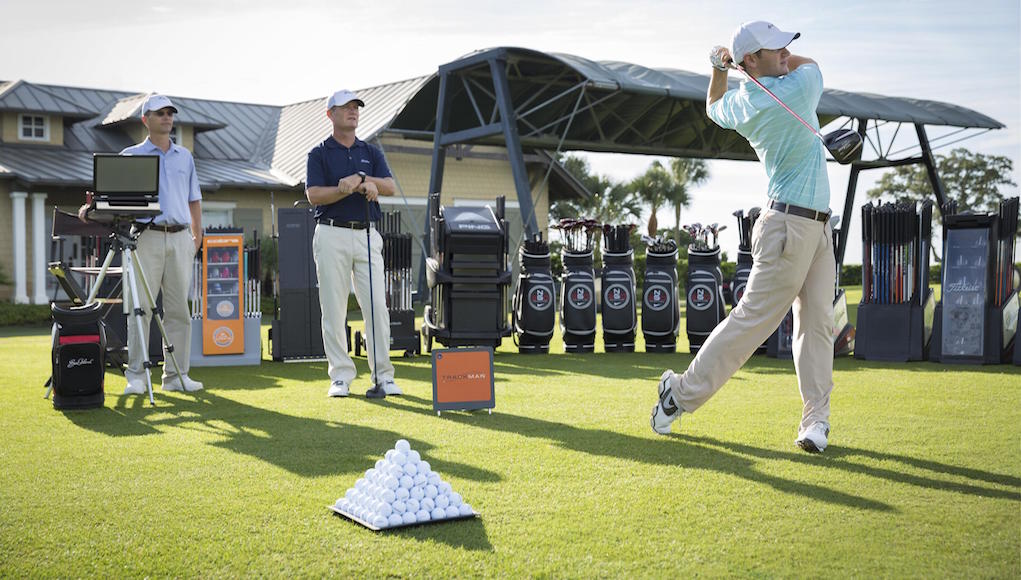
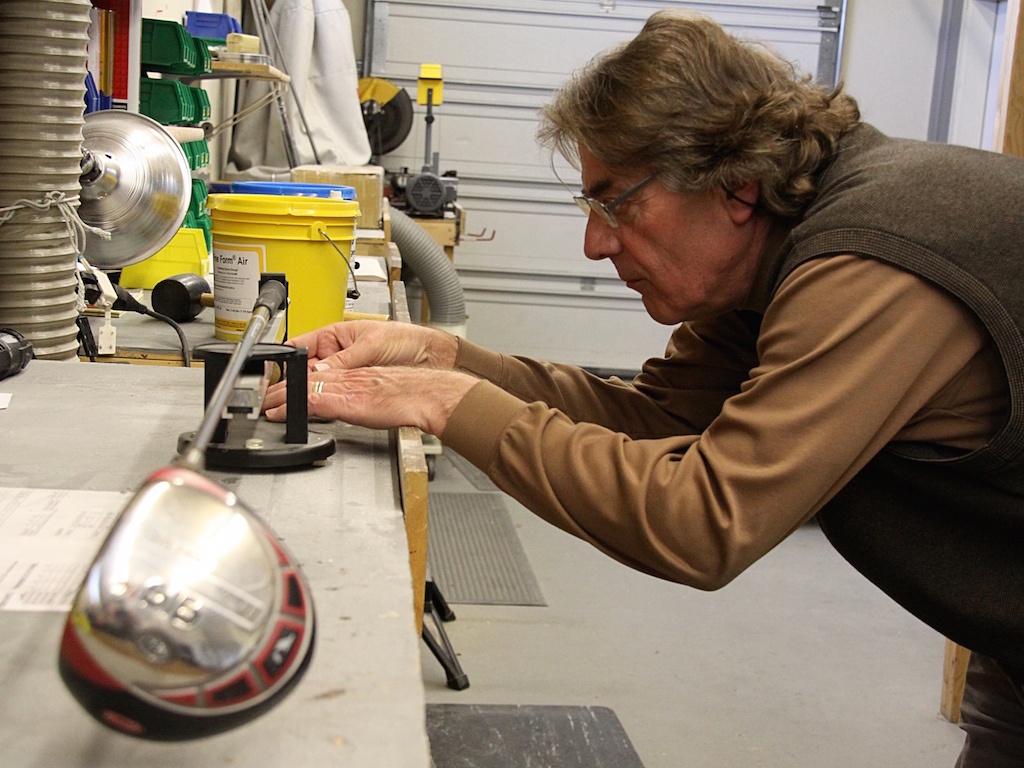

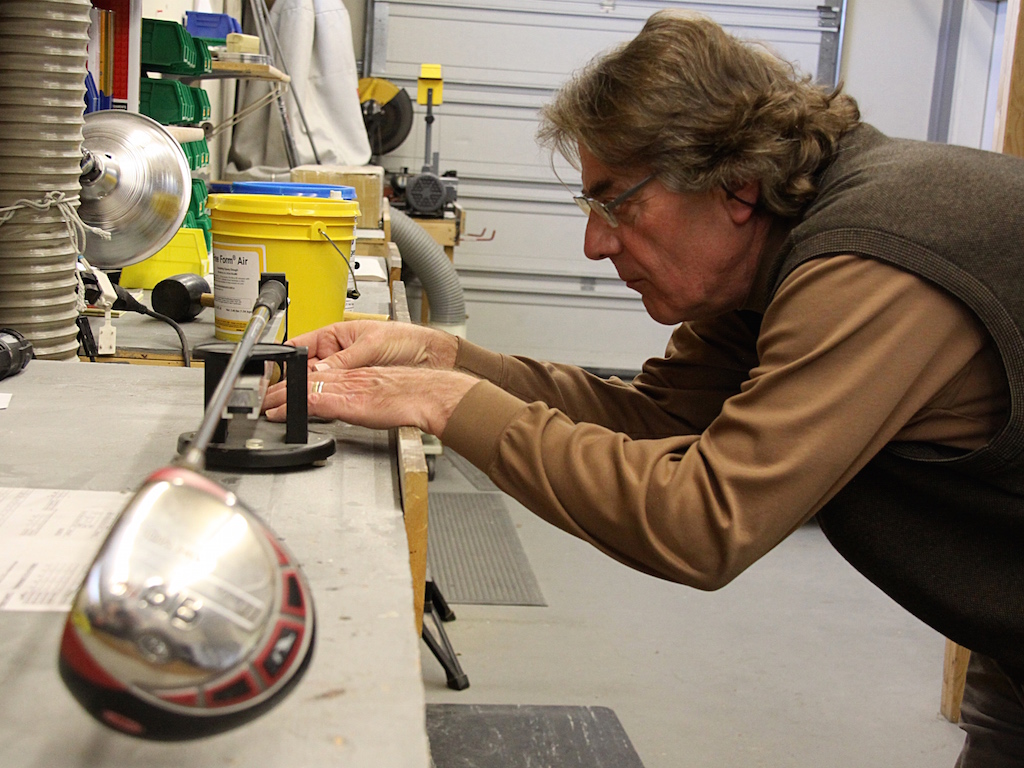
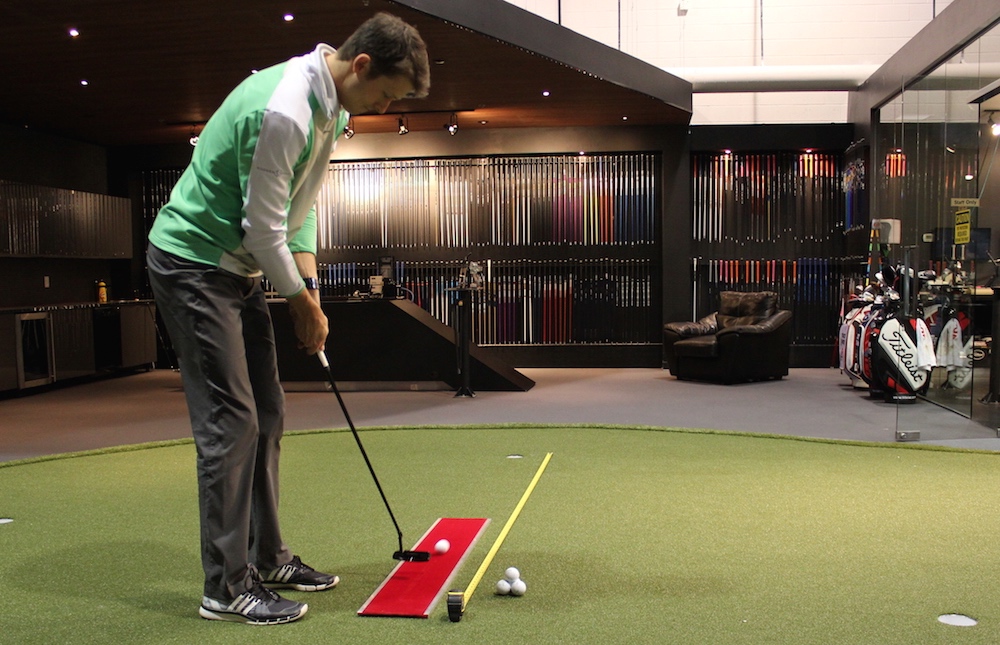
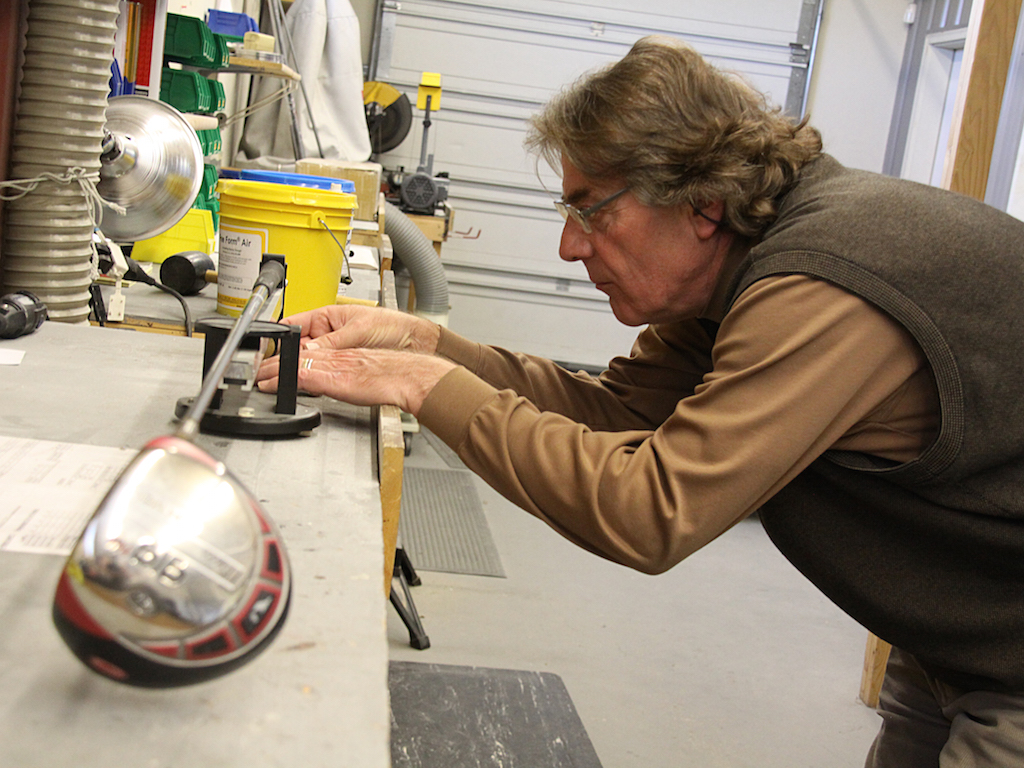














John
Jul 4, 2017 at 11:31 am
Tom, i think your sort of wrong with your slowing down part of the arms and the speed of the club head? what actually is happening is central-fugal force. if you (agree) keep the angle between writs and club head to late. the weight of the club head increases (G Force) as its released. actually if there is no tension in the hands you should not be forcefully releasing the club? this should happen naturally. again due to swing plain and G force (the whip effect) as the club head move toward the ball the length of the arc is increasing and there for gravity take over and the actually speed of the head slows the hands down as the club and arm angle increases. more golfers do not understand this effect as there body / arms are to busy fighting to try to get or keep the club on plain… the out to in wing path is a result of allowing the hand to actually swing down on the incorrect path (out of control) allowing central fugal force to throw the hand away from the body. But the brain work much after than the eye and somehow with good eye and hand coordination the club get to the ball in a slight out to in path. the club head could be actually square but pulling across the ball that causing the slice. fundamentally to belief? the draw is actually an open club face delivers from the inside going out (not a closed club face) it may be closing but not actually closed at impact
Kourt
Nov 21, 2015 at 2:10 pm
Hi Tom I was wondering if you’ve ever seen a benefit in a high swing speed player to having only 3 degree loft gap in the higher lofted irons? Say for example switching from 48, 52,56,60 to 48,51,54,57,60.
I currently have 4 degree gap covering 24-60 in irons. I feel like having more options inside 160 yards (which is where I find im hitting the majority of my approach shots on almost all courses I play) would be more effective then having another long iron or hybrid in the bag.
I have about 15 yard gap between wedges currently and only about a 10yard gap in the longer irons.
Since the majority of scoring opportunities come from inside 160 yards for me, and outside 200 yards even on my best swings its rare to be inside 15 ft, do you think decreasing the gap to 3 degrees would shrink the yardage gaps or is it too small of a change to even notice much improvement?
Justin
Jan 15, 2015 at 9:55 am
Do you feel that club length has any impact on swing path and not vice versa? (i.e. longer club lengths promoting a more in to out path whether due to swing weight, feel, etc…?)
Tom Wishon
Jan 15, 2015 at 7:23 pm
Justin
Absolutely the length of the driver has an extremely important relationship to the swing path and to the release. From our extensive work in this area, the longer the length of the driver, the more tendency there is to release the club earlier AND to swing over the top and more outside in. Of course, the more athletically inclined the golfer, the more the golfer can “fight off” these effects to still retain his path and release. But no question for the average to less skilled player, longer driver lengths really make it difficult for them to ever learn how to swing with an inside out to square path and to be able to hold the release longer on the downswing.
The reason this happens is because the longer the driver length, the higher the MOI of the fully assembled driver (not talking MOI of the head here, talking MOI of the whole club). And the higher the MOI of the full driver, the more load it puts on the golfer and the weak parts of his swing. hence with avg to less skilled players, the longer length in essence “attacks” their weak points which typically are their path and release.
Ken
Jan 14, 2015 at 11:48 am
I’m a low-launch low-swing-speed senior, and I sort of agree with you. But I think the confusion comes from the fact that Tom appears to be talking about trying to get high-launch, high-spin players to come down by giving them a stiffer shaft with a high bend.
In your case, I’ll bet that the low-bend shafts are also softer than the high bend ones, and that combination should help bring the ball flight up.
There’s also the fact that going the direction you did often gives players like us a much better feel for the action of the shaft, allowing us to better time the release, which improves the ball flight.
K
Eugene Marchetti
Jan 14, 2015 at 11:29 am
Your articles are always full of very useful information. Do you ever reccomend matching your set to the course you play the most. I played 73 rounds last year with 62 on the same course built in 1927 of only 6100 yards. Extremely small greens and tree lined fairways put the emphasis on accuracy not distance. There are five holes were a driver and even a three wood gets you in trouble and our two par fives are really long par fours. Therefore I don’t carry a three wood but hit a 16 degree four wood as my first wood, after my driver. Also, i found my 3 hybrid 18 degrees goes too far on a couple of holes which land in a hazard or sand trap so my set, after the woods, starts with a 21 degree four wood. I think matching your set to the course is extremely important. Again, thanks for your informative articles.
myron miller
Jan 14, 2015 at 10:41 am
I like the article overall and got some good information out of it. One point I’m confused about. You said the shaft can change launch angle only slightly and then only for later-releases. My confusion comes about in my own personal experience. Being a tad on the old side, my distance has obviously decreased significantly. In the typical golfer desire for more distance, I’ve tried a lot of different shafts in my driver. What was really interesting is that those with the bend point near the tip produced significantly higher launch angles than those with the bend towards the grip with mid-average bend shafts still being lower than the low bend shafts.
And by significantly different, I’m talking launch angles running from 6-8 degrees on high bend to 13-17 degrees for the tip flexible, with the obvious reductions in distance from the lower launch angle. To the best of my knowledge and the fitters I worked with, nothing on my swing changed, just the shaft bend profile. We tried to keep the same overall flex as much as possible.
And of course, I realize that this is a specific case and not generally true, but?
Do you understand my confusion and help explain what I am not understanding here?
Tom Wishon
Jan 15, 2015 at 11:06 am
If the shafts with a softer tip section bend profile did bring about a higher flight, then you must have a later to late-ish release to allow this effect to happen. Let me explain how this works so it can be a little more clear.
As we start the downswing, as long as we keep the wrist hinge angle between the arms and the shaft, the club and the arms are both moving at the same speed. Once we start to unhinge that angle, the arms begin to slow down while the club begins to accelerate. This happens because upon the start of the release, the energy in the arms is being sent to the club. So with the arms giving up their energy to the club, they have to start slowing down, while the club with its increased energy from the arms begins to speed up.
With the arms slowing down and the club speeding up, the accelerating clubhead now starts to push forward against the slowed arms. Because @2/3’s of the mass of the club is in the head, the head now starts to push the shaft into a forward bend shape. And as the shaft bends forward, the loft on the head increases dynamically. So if you have a more flexible shaft or more flexible tip section in the shaft, the amount of forward bend is greater, which means the dynamic loft increase is greater too. And that’s what causes the higher flight from the softer shaft.
BUT. . . this all depends on how much the shaft is still in its forward bending position when the clubhead gets to the ball. If the release of the wrist hinge angle is early in the downswing, the forward bend of the shaft happens well before the head gets to the ball. As such the shaft then can have time to bend forward from the effect of the release, but because the early release causes this too soon in the downswing, the shaft can bend back to straight by the time of impact, which means the shaft’s stiffness design can’t have any effect on the height of the shot.
This is all a PROGRESSIVE ACTION. Meaning, the very latest release causes the shaft to bend forward the most, a sort of late release causes the shaft to be bent forward but not as much as with the very late release, a midway release causes the shaft to be bent forward a tiny bit but not as much with the later or very late release. But then the early to early/midway release causes the forward bending too soon so the shaft can rebound back to have no effect on trajectory. So this is all progressive in its effect on shot height as the release becomes a little later and a little later and a little later.
Hence for you to see a height change from the softer tip shaft, you do have to have somewhat of a late-ish release but definitely not an early release. Hope this helps.